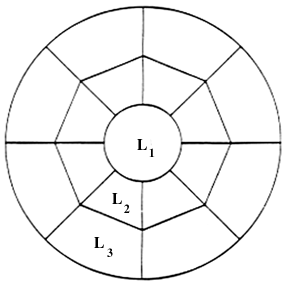Fall 1990 // Volume 28 // Number 3 // Ideas at Work // 3IAW2
Program Focus Wheel
Abstract
Extension professionals and volunteers regularly engage in complex program planning. The process is composed of many interrelated components that must operate coherently to achieve program success. Instructional methods that help people visualize the arrangement of these relationships represent valuable program planning tools. I regularly use such a tool with various Extension audiences, including 4-H volunteers.
During a recent series of 4-H Middle Management Workshops, I began my instruction with a pencil and paper exercise that required the volunteers to focus on their perceptions of the goal of 4-H and the major program components of a successful 4-H program. The purpose of the activity was to increase the volunteers' understanding of the relationship between the goal of 4-H and its various program components. Some volunteers said they'd never really thought about how the various program components fit together. And, some expressed a new-found awareness that some components were more essential than others.
The instrument the volunteers used is called a Focus Wheel (see Figure 1). I developed and have used it since 1976 because it serves as a format for focusing learners' critical thinking on the hierarchy of program components needed to reach a particular goal.

Figure 1. Structural arrangement of Focus Wheel.
Instructions for the Focus Wheel are presented as an analogy in which metaphors are used to translate the abstract diagram into a systems approach to program planning. Within the analogy, the Focus Wheel is described as a revolving wheel. Participants are asked to write within the "hub circle" (L1), the goal of the program or issue being examined. Hub circle is used in the context of the focal point, or goal, of all ensuing planning.
In each block of L2, participants are asked to write those primary components that supply "motion" to the program or issue. Motion is analogous to a network of essential parts that form the beginning of the goal achievement planning process. For L3 blocks, participants are asked to record secondary components that "round out" the program or issue. Round out is used in the context of identifying program components that lead to a fully developed program. An example of a completed Focus Wheel is shown in Figure 2.

Figure 2. Voluneteer leaders' 4-H program components.
Audiences have always responded favorably to the Focus Wheel exercise, now more sure where they need to concentrate their programming efforts. Participants sometime request additional copies of the Focus Wheel so they can adapt it to other organizations. You may find a use for the Focus Wheel too.
